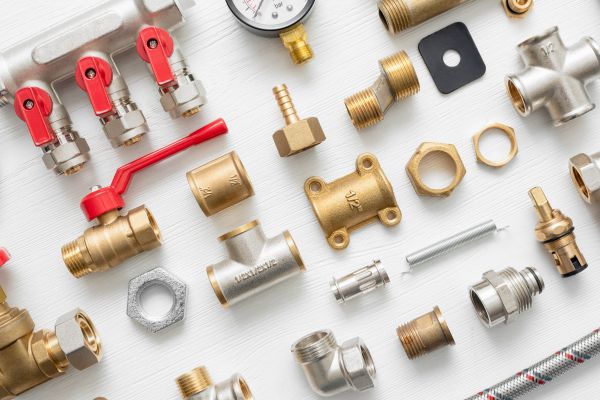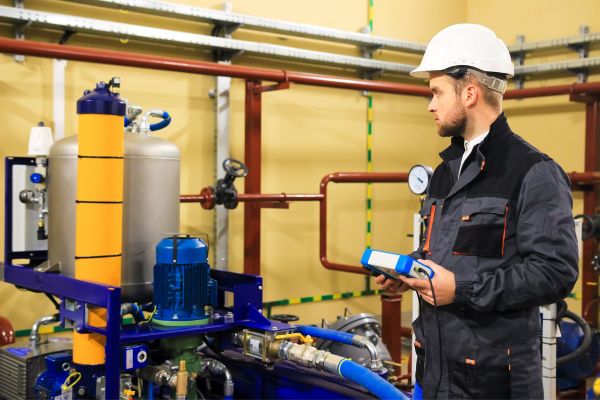Let’s face it: the heart of every home lies in the kitchen and bathroom. But have you ever stopped to think about the unsung hero of these spaces? Yep, we’re talking about plumbing! From the faucet you turn on each morning to the sink that handles your dinner party cleanup, kitchen and bath plumbing does a lot of heavy lifting. This guide will walk you through everything you need to know about plumbing systems in these critical areas, ensuring they’re not just functional but also visually appealing.
The Basics of Kitchen and Bath Plumbing
Before diving into the nitty-gritty, it’s important to understand the core components of plumbing in kitchens and bathrooms.
Key Elements of Kitchen Plumbing
- Faucets: The focal point of every sink. Today’s models combine technology with style, offering touchless and pull-down designs.
- Sinks: From single-basin to farmhouse styles, the sink is both functional and a design statement.
- Dishwashers: These connect directly to your kitchen’s water supply, streamlining cleaning chores.
- Garbage Disposals: Perfect for grinding food waste, these are kitchen essentials for convenience and hygiene.
Key Elements of Bathroom Plumbing
- Toilets: Available in standard and modern designs like wall-mounted or dual-flush.
- Showers and Bathtubs: These feature diverse plumbing setups, from rain showerheads to jetted tubs.
- Vanity Sinks: These often require careful attention to both plumbing and aesthetics.
Installation Tips for Kitchen and Bath Plumbing
Whether you’re remodeling or building from scratch, proper installation ensures the long-term functionality of your plumbing systems.
Kitchen Plumbing Installation
- Plan the Layout: Keep the sink, dishwasher, and garbage disposal close together to reduce plumbing complexity.
- Choose Quality Fixtures: Invest in durable faucets, pipes, and fittings.
- Test Water Pressure: Ensure water flows at optimal pressure, avoiding potential pipe stress.
Bathroom Plumbing Installation
- Locate Drainage Points: Properly align toilets, sinks, and showers with drainage systems.
- Ventilation Matters: Vent pipes are crucial for preventing blockages and unpleasant odors.
- Consider Accessibility: Think about future-proofing your bathroom with features like walk-in showers.
Common Plumbing Issues and Fixes
Even with the best setup, problems can pop up. Here are some common issues and how to tackle them.
Kitchen Plumbing Problems
- Clogged Drains: Avoid pouring grease down the sink. Use a plunger or baking soda and vinegar for quick fixes.
- Leaky Faucets: Often caused by worn-out washers. Replacing them is usually a straightforward task.
- Low Water Pressure: Clean or replace aerators to improve water flow.
Bathroom Plumbing Problems
- Running Toilets: Check the flapper valve or float for any misalignments.
- Dripping Showerheads: Tighten connections or replace worn-out seals.
- Blocked Shower Drains: Hair buildup is often the culprit. A drain snake can work wonders.
Upgrading Your Kitchen and Bath Plumbing for Modern Living
Plumbing isn’t just about pipes and fixtures—it’s about convenience, sustainability, and style.
Trends in Kitchen Plumbing
- Touchless Faucets: Perfect for busy cooks, reducing the spread of germs.
- Instant Hot Water Dispensers: No more waiting for your kettle to boil.
- Smart Dishwashers: Energy-efficient models that sync with your smartphone for ease of use.
Trends in Bathroom Plumbing
- Rainfall Showerheads: Create a spa-like experience in your own home.
- Eco-Friendly Toilets: Dual-flush systems conserve water with every use.
- Heated Floors: Warmth beneath your feet is a luxury worth splurging on.
Maintenance Tips to Extend Plumbing Lifespan
Taking care of your plumbing system can save you from costly repairs down the line.
- Regular Inspections: Check for leaks or corrosion around fixtures and pipes.
- Avoid Chemical Drain Cleaners: Opt for natural methods to clear clogs.
- Insulate Pipes: Protect against freezing during colder months.
- Flush Drains: Periodically flush sinks and drains with hot water to prevent buildup.
FAQs About Kitchen and Bath Plumbing
Q: How do I choose the right faucet for my kitchen or bathroom?
A: Focus on durability, water efficiency, and style. Look for faucets with ceramic disc valves for longevity.
Q: Can I install plumbing fixtures myself?
A: While minor replacements like faucets are DIY-friendly, major installations (e.g., pipes) are best left to professionals.
Q: How can I prevent clogs in my kitchen sink?
A: Avoid dumping grease or large food particles down the drain. Use a mesh strainer to catch debris.
Q: What’s the average lifespan of plumbing systems?
A: Pipes typically last 50-100 years, while fixtures like faucets may need replacing every 10-15 years.
Q: Do touchless faucets require special maintenance?
A: Yes, you may need to replace batteries or clean sensors to ensure proper functionality.
Conclusion
Your kitchen and bath plumbing might not be the flashiest part of your home, but it’s undeniably one of the most critical. By investing in quality fixtures, staying on top of maintenance, and embracing modern upgrades, you’ll enjoy a functional and stylish space for years to come. So, whether you’re tackling a small repair or planning a complete remodel, these tips have got you covered!
Authoritative Links
- American Society of Plumbing Engineers – https://www.aspe.org
- National Kitchen and Bath Association – https://www.nkba.org
- EPA WaterSense Program – https://www.epa.gov/watersense



